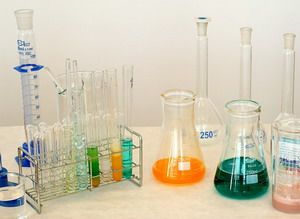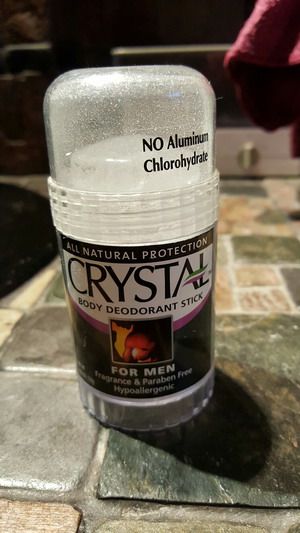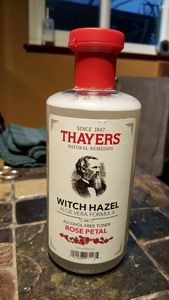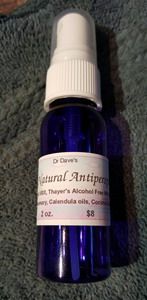
As a people, we pride ourselves on our appearance. We care for our looks and presentation at a level that in previous times was only available to nobility and the very wealthy. In this day and age this is expected of us, and if we do not, we are excluded from the companionship of polite company. Although this all seems not only natural, but essential, in reality this is a very recent occurrence in human history.
For example, on average we wash our hair four times a week. We shower seven days a week. We roll deodorant or antiperspirant on our armpits and use various other sprays on our body on a daily basis. Yet as little as fifty years ago showers were weekly rituals and deodorants were just being introduced to the public. One hundred years ago personal hygiene meant scrubbing your face before going to church or some social gathering.

We have been sold on the need to be and smell clean. I, like most of you, am in favor of the improved smell, but truthfully there is no biological need for it. In fact, the more clean we keep ourselves, the more likely we are to pick up disease. With cleaning we wash off the protective good bacteria that coat our skin and keep us safe from the typical nasty bacteria in the environment. Yes, I know we have all been taught to fear dirt and the bacteria that might be lurking in it, and I certainly don’t want you to be playing in the sewer, or preparing food without washing your hands after going to the bathroom, but most of the fear is really about selling us cleaning products, not about our health.
This is really the subject of this newsletter – the personal hygiene cleaning products we use every day. Are they safe? If you are skimming this newsletter, then the simple answer is no, they are not safe. Why not?

The world of soaps and cleansers is not what it was a hundred years ago. Since the development of the petrochemical industry, thousands of new poisons have been invented every year and more are put into our lives through such things as shampoos, body washes, antiperspirants, household cleansers, and the like. Most of these new chemicals are never tested for safety before they are used. If you would like to get a fair picture of what I am talking about, go to the Environmental Working Group website. They check and rate products and the chemicals used in the products for safety. They are a good organization to send a donation to as they are really looking out for you.
I have already mentioned the negative impact on the protective good guy bacteria living on our skin that personal hygiene products create, but what about our insides? We think our skin is designed to keep the outside out and the inside in, but that’s not quite true. The skin is covered with pores, which are each like an open mouth. Any chemical you’re putting onto your body, will get into your body. You know how all the gas pumps warn you about not getting gasoline on your skin? Well, gas is just another petrochemical product like all the thousands of other chemicals put into our personal care products.

A huge number of these products are estrogen mimickers, meaning that they mess up your hormones by putting synthetic estrogen-like chemicals into your system. A good example is are the parabens found in so many products. Other nasty chemicals are well known for causing birth defects and cancer. Still others affect the nervous system. Sodium lauryl sulfate, Phthalates, Triclosan, and Methylisothiazolinone are just a few examples of the many dangerous chemicals you are probably putting on your body every day.
For many years now I have made my own soaps and shampoos out of simple natural ingredients that have worked quite nicely. My hair stylist tells me how much she likes cutting my hair because it is always so clean and healthy – no residues of hair products or conditioners. I have very fine hair and until recently my homemade shampoo did not work for Ellen, who has much thicker hair than I. But I have since modified my recipe, and now it works for her as well.

However, for years I have used the rock crystal deodorant, which worked for my body, but not for Ellen’s. A couple months ago I started researching natural antiperspirants and found an excellent option on a website for folks with hyperhydrosis – chronic excess sweating. The option most of the members said worked the best was good old fashion witch hazel. Most witch hazel is in an alcohol base, which dries the skin and kills the good bacteria, but one brand does make an alcohol free version. Witch hazel is an astringent, which tightens the pores to prevent sweating.

I decided that this would make a good base for a natural and safe antiperspirant. But naturally I wanted to do more, so I found a way to turn the liquid in witch hazel into full strength aloe vera gel. Aloe vera is known worldwide for its healing and skin support properties. Still not satisfied, I went into essential oils to find the best herbals for killing bad bacteria and fungus – Rosemary and Thyme – as well as the best traditional essential oil for skin support and health – Calendula. A bit of experimenting, to figure out a nontoxic way to get the oil to blend in with the water-based witch hazel, led me to organic coconut oil castile – as a blending agent. Finally my formula was complete.

Ellen and I have been using my creation now for a couple months and find that it works great – without all those poisonous chemicals. I have been using the same 2 ounce bottle for a couple months. Ellen has found that it also works well elsewhere on the body. My research has shown that these ingredients work great on vaginitis, itchy legs, and hemorrhoids.
This is just a small step in detoxifying our home environment, but one that is significant, since these type of products are so regularly used right on our skin. For those of you who are interested, I am now selling some of my Safe & Natural Antiperspirant in 2 ounce bottles in the office for $8.
